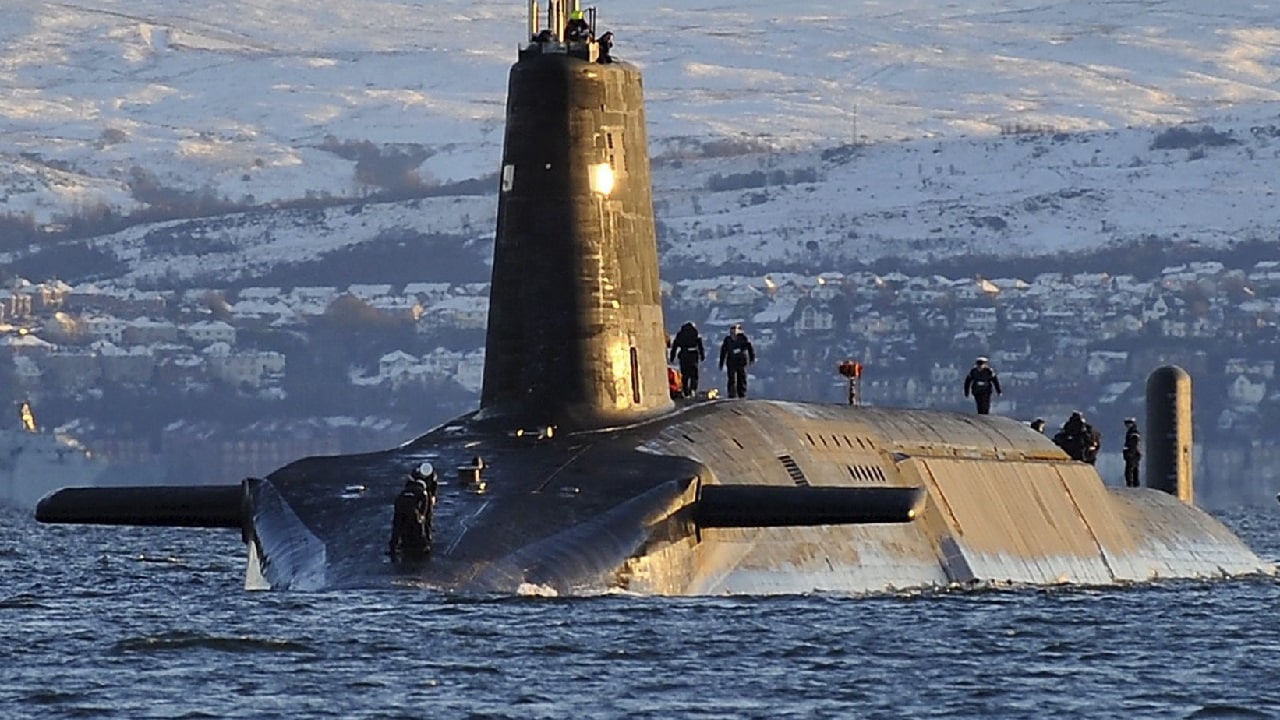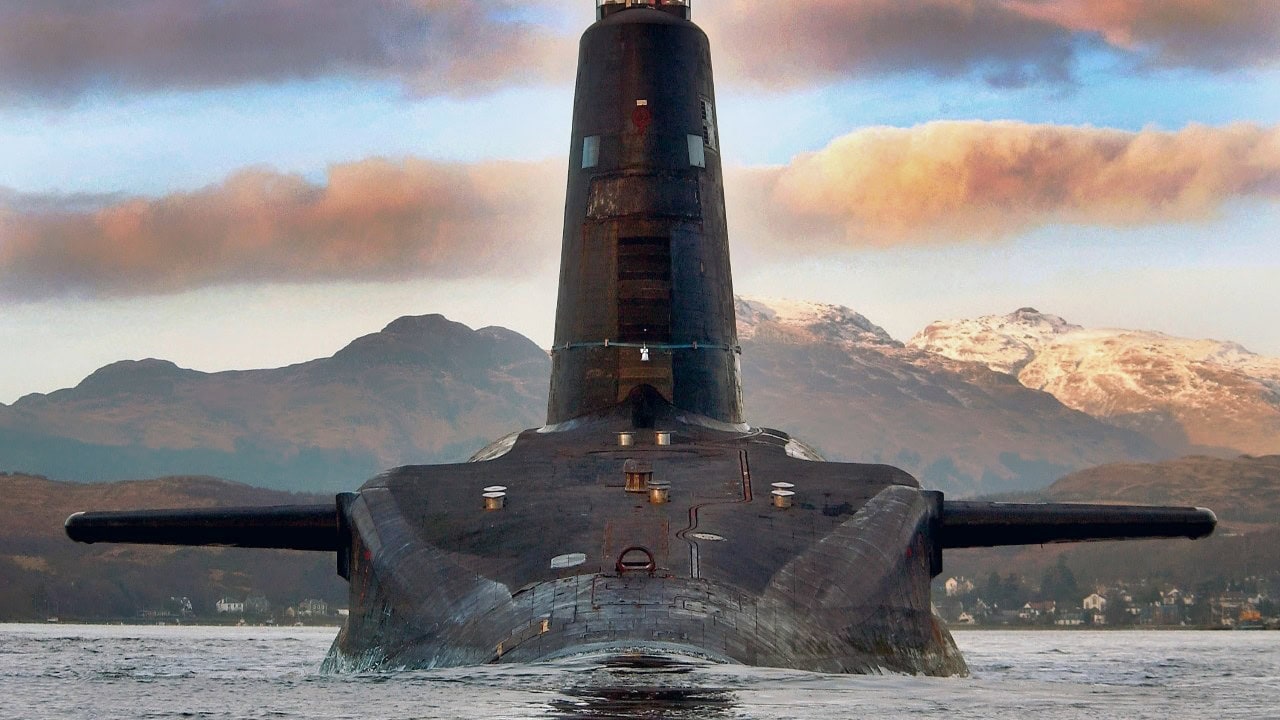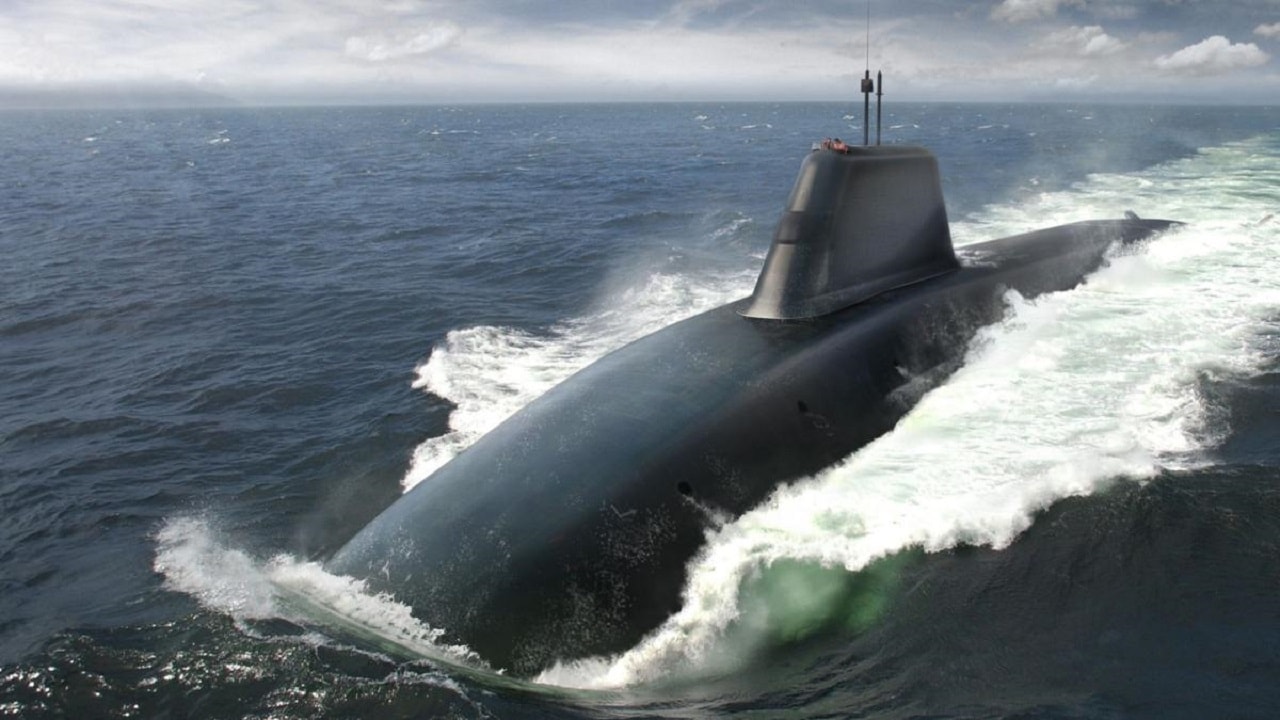The need for the Dreadnought-class submarines arose from the aging Vanguard-class, which entered service in the 1990s with an intended service life of 25 years. The Vanguard-class has been the backbone of the UK’s nuclear deterrent, carrying Trident II D5 ballistic missiles.
However, as these submarines approached the end of their operational life, the UK government recognized the necessity of developing a new class of submarines to maintain its deterrent capabilities.

Vanguard-class Submarine. Image Credit: Creative Commons.
In 2016, the UK Parliament approved the construction of the Dreadnought-class submarines, marking the beginning of a significant investment in the nation’s defense infrastructure. The first three submarines, HMS Dreadnought, Valient, and Warspite are currently under construction at BAE Systems’ shipyard in Barrow-in-Furness and is expected to enter service in the early 2030s.
Design and Specifications
The Dreadnought-class submarines are designed to be larger and more advanced than their predecessors. Each submarine will have a displacement of approximately 17,200 tonnes and a length of 153.6 meters, making them the largest submarines ever built for the Royal Navy.
The beam of the submarines is 12.8 meters, and they will be powered by a Rolls-Royce PWR3 nuclear reactor, which provides a virtually unlimited range and operational endurance.
One of the key innovations in the Dreadnought-class is the use of X-rudders, which improve maneuverability and safety. These rudders, combined with the latest pump-jet propulsor, make the submarines quieter and more difficult to detect. The submarines will also feature advanced stealth technologies to minimize their acoustic signature, ensuring they remain undetected while on patrol.
Armament and Capabilities
The primary armament of the Dreadnought-class submarines will be the Trident II D5 ballistic missiles, which are also used by the Vanguard-class. Each submarine will be equipped with 12 missile tubes, arranged in three compartments known as “Quad Packs”. These missiles provide the UK with a credible and effective nuclear deterrent, capable of delivering devastating strikes against potential adversaries.
In addition to ballistic missiles, the Dreadnought-class submarines will be armed with Spearfish heavyweight torpedoes, launched from four 533mm torpedo tubes. These torpedoes are designed to engage and destroy enemy submarines and surface ships, providing the Dreadnought-class with a robust self-defense capability.
Each Dreadnought-class submarine will accommodate a crew of approximately 130 personnel, including three chefs and one doctor. Anyone who has ever set foot in a nuclear submarine can attest to how uncomfortable and claustrophobic they can be. The Dreadnaught-class submarines are designed with crew comfort in mind, featuring separate quarters, toilets, and washing facilities for female crew members. Life on a submarine is challenging, but the Dreadnought-class aims to provide a more comfortable and sustainable living environment for its crew.
Ensuring Nuclear Deterrence
The Dreadnought-class submarines are a critical component of the UK’s national security strategy. By maintaining a continuous at-sea deterrent, the UK ensures that it has a credible and effective nuclear deterrent at all times. This capability is essential for deterring potential adversaries and ensuring the nation’s security in an increasingly uncertain world.
The development of the Dreadnought-class submarines also represents a significant investment in the UK’s defense industry. The construction of these submarines supports thousands of jobs and contributes to the nation’s economic growth.

Nuclear submarine HMS Vanguard arrives back at HM Naval Base Clyde, Faslane, Scotland following a patrol in 2010.
Furthermore, the advanced technologies developed for the Dreadnought-class have the potential to benefit other areas of defense and civilian industries.
Mind the Budget
The development and construction of the Dreadnought-class submarines are not without challenges. The project is complex and requires significant financial investment. The estimated lifetime cost of the Dreadnought program is around £31 billion (2016 prices), equivalent to approximately £41.69 billion today.
Managing these costs while ensuring the timely delivery of the submarines is a critical challenge for the UK government and defense contractors.
Despite these challenges, the Dreadnought-class submarines is a vital and necessary investment in the UK’s national security. As the first of these submarines enters service in the early 2030s, they will ensure that the UK maintains its continuous at-sea deterrent capability for decades to come.

Vanguard-Class Submarine Royal Navy
The Dreadnought-class submarines are a testament to the UK’s commitment to maintaining a credible and effective nuclear deterrent.
With their advanced design, cutting-edge technologies, and formidable capabilities, these submarines will play a crucial role in ensuring the nation’s security in the 21st century.
As the construction of the first Dreadnought-class submarine progresses, the UK can look forward to a new era of naval power and strategic deterrence.
About the Author: Isaac Seitz
Isaac Seitz, a 19FortyFive Defense Columnist, graduated from Patrick Henry College’s Strategic Intelligence and National Security program. He has also studied Russian at Middlebury Language Schools and has worked as an intelligence Analyst in the private sector.

